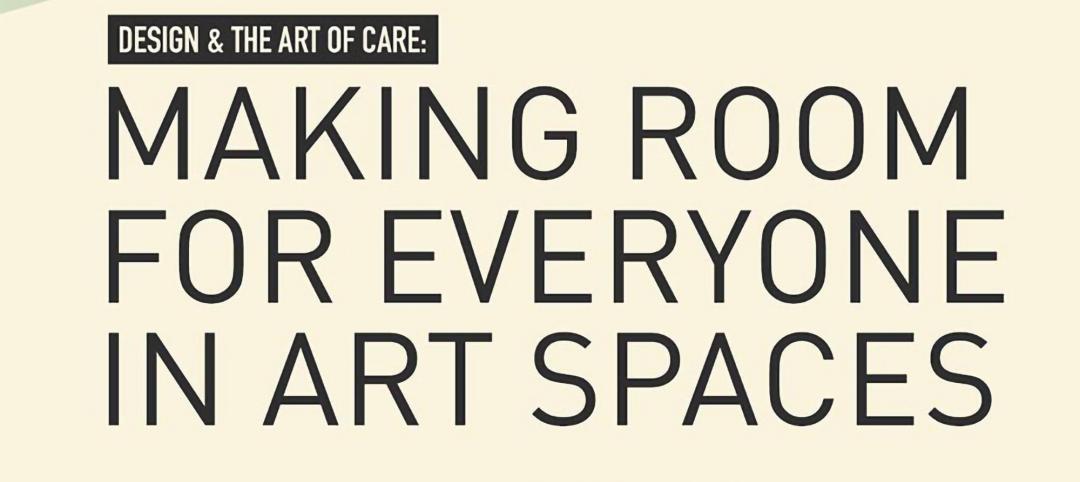Big-box retail is everywhere. Evolving shopping practices, the ever-changing model of development for these spaces, and the economic impact of the COVID-19 pandemic have left many large buildings sitting vacant. In 2020, more than 12,200 major retail store locations permanently closed. This translates into 159 million square feet of empty retail space across the United States today.
These empty sites pose challenges for communities and developers who wish to give them new life and purpose. Designed for a retail experience, these big box stores have large open plans that sit on expansive parking, which separates them and their patrons from the street. The nature of the building and site offer potential for re-invention. There is a tremendous opportunity to repurposing these “ghost stores” from taking advantage of the embodied carbon of the site to increased economic incentive for communities.
There are many design interventions that can help transform these properties.
Here are six to consider:
- Elevate the façade design
Too often, retail buildings rely only on signage to reinforce their brands. Elevating the exterior’s appearance with a new façade is an important step towards changing the image of the building. Transforming the face of the building helps transform public perception and position the building for a new narrative about its place in the community.

- Create more openings in the exterior to increase daylighting
Big-box retail buildings are often constructed of concrete masonry load bearing walls, which can create challenges for modifying the façade. The deep footprint of these buildings makes bringing in daylight essential to improve the experience of being inside. Increasing openings in the exterior envelope brings in additional natural light and provides opportunities for views along the perimeter of the building. “Carving” into the massing of the building by removing larger portions of structural elements and adding skylights in the roof can bring light deeper into the heart of the bulding, activating spaces where people feel comfortable and are likely to gather.


- Engage with the outdoors by reducing parking and adding landscaping
Big-box retail sites are surrounded by a sea of parking that can make them feel remote and disconnected from our everyday lives. This sense of isolation can impact our sense of community and accessibility. By reducing the amount of parking, adding landscaping, or even developing these sites with additional buildings, the site becomes more approachable and welcoming.
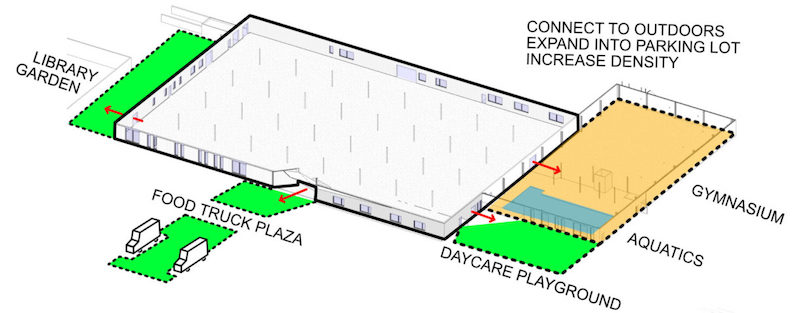
- Reconfigure the building to support multiple tenants
Big-box retail buildings are built to house a single tenant under one roof. However, the large footprint of these buildings is ripe for subdivision into multiple smaller spaces, which are better suited to today’s needs. The shift from retail means that these spaces can easily be repurposed into offices, restaurants, civic, and other uses that better serve the community. One strategy is to create an interior “main street” or “town square” inside the building to give frontage to multiple spaces. Creating an interior space that makes a combination of tenants accessible encourages patrons to stay longer—think of it as a “micro-mall.” Another strategy is to modify the exterior building envelope to have multiple new entrances to tenant spaces. The example below shows a town square concept.

- Capitalize on the high spaces inside the building
The high ceilings of big-box retail buildings create opportunities to add mezzanines and floor levels inside the building to further maximize the amount of usable area under one roof. The columns can typically take the load of one extra floor. However, this type of intervention will bring with it the need for passenger elevators, stairs, and additional restrooms.

- Use the roof to boost energy efficiency
A large roof is an opportunity to implement sustainable strategies that go beyond the reuse of embodied carbon in the existing building. It can become an energy generator by adding an array of photovoltaic cells to generate electricity for the building’s use. Aside from enhancing the experience of the space inside by filtering daylight into the building through added skylights and courtyards, the roof can also capture rainwater for reuse in restrooms or planting areas.

The most sustainable building is the one that’s already built; there is great potential for re-invention of these building types. There are challenges, such as the need for improved energy performance and modified MEP systems, but there are even greater rewards for the community in the form of new amenities and catalyzing new growth.
Here are a few examples of how we’re implementing these strategies on our own work:

Lake West 5 Exhibit Hall – Reconversion of a car dealership into a real-estate exhibit hall. (Tianjin, China). Increasing openings in the exterior increases daylight into the building and bolsters its nighttime presence. Learn more.
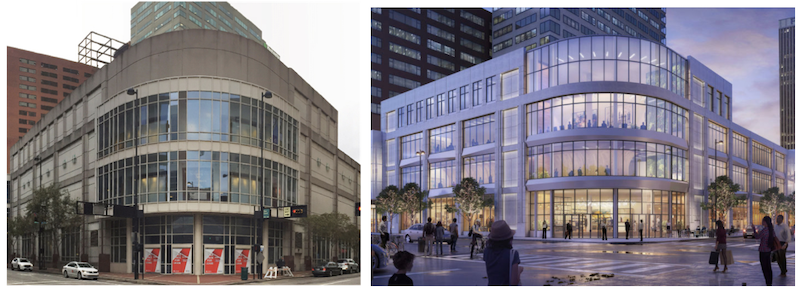
The Foundry – Conversion of an urban big box retail store into a mixed-use development with office tenants on the upper floors and street-facing restaurants on the first floor (Cincinnati, Ohio). Once home to a single tenant (Macy’s) the transformed building will house multiple office tenants as well as ground floor cafes. This project will also significantly increase the amount of natural light coming into the building. Learn more.
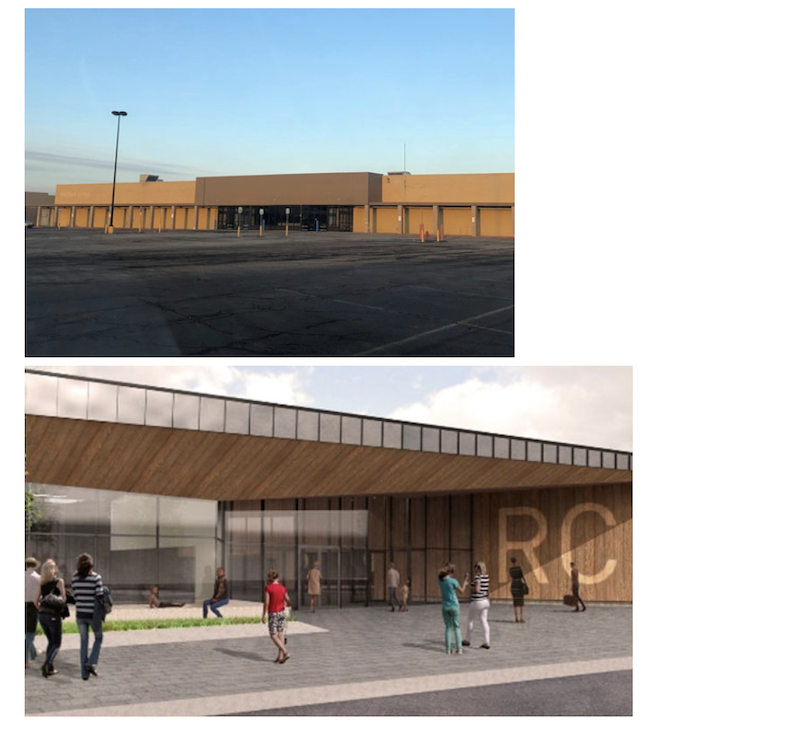
Rushville Community Center – Conversion of an abandoned Walmart to become a community center for services, including a community library, senior center, early childhood center, gymnasium & aquatics fitness, a food pantry, and government services hub center (Rushville, Indiana). Upgrading the façade helps an old building tell a new story.
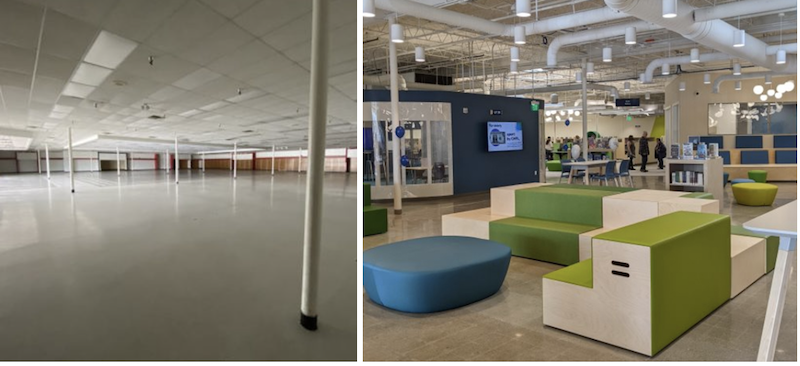
Working with the Cincinnati & Hamilton County Public Library system, we transformed a former TJ Maxx store into a vibrant new community library (Cincinnati, Ohio). The project took the large open floor plan and created different zones for both quiet and loud activities.
More from Author
GBBN | Sep 12, 2024
How space supports programming changes at university libraries
GBBN Associate Sarah Kusuma Rubritz, AIA, uses the University of Pittsburgh's Hillman Library to showcase how libraries are transforming to support students’ needs.
GBBN | Jul 3, 2024
New science, old buildings: Renovating for efficiency, flexibility, and connection
What does the research space of the future look like? And can it be housed in older buildings—or does it require new construction?
GBBN | Jun 3, 2024
Insights for working well in a hybrid world
GBBN Principal and Interior Designer Beth Latto, NCIDQ, LEED AP, ID+C, WELL AP, share a few takeaways, insights, and lessons learned from a recent Post Occupancy Evaluation of the firm's Cincinnati, Ohio, office.
GBBN | Feb 26, 2024
GBBN's Inflation Reduction Act Calculator goes live
GBBN has publicly released its IRA Calculator, a tool that helps you understand funding opportunities in the IRA for sustainable design.
GBBN | Jan 25, 2024
Tactical issues for renovating university research buildings
Matthew Plecity, AIA, ASLA, Principal, GBBN, highlights the connection between the built environment and laboratory research, and weighs the benefits of renovation vs. new construction.
GBBN | Dec 14, 2023
What's next for affordable housing in 2024?
As 2023 draws to a close, GBBN’s Mary Jo Minerich and Amanda Markovic, AIA sat down to talk about the future. What’s next in terms of trends, technology, and construction of affordable housing?
GBBN | Oct 11, 2023
Leveraging land and light to enhance patient care
GBBN interior designer Kristin Greeley shares insights from the firm's latest project: a cancer center in Santa Fe, N.M.
GBBN | Aug 31, 2023
Small town takes over big box
GBBN associate Claire Shafer, AIA, breaks down the firm's recreational adaptive reuse project for a small Indiana town.
GBBN | Jun 20, 2023
Designing arts spaces that curate inclusivity
GBBN's Julia Clements and Marcene Kinney, AIA, LEED AP, talk tips for designing inclusive arts spaces.
GBBN | Mar 22, 2023
Onsite prefabrication for healthcare construction: It's more than a process, it's a partnership
Prefabrication can help project teams navigate an uncertain market. GBBN's Mickey LeRoy, AIA, ACHA, LEED AP, explains the difference between onsite and offsite prefabrication methods for healthcare construction projects.










